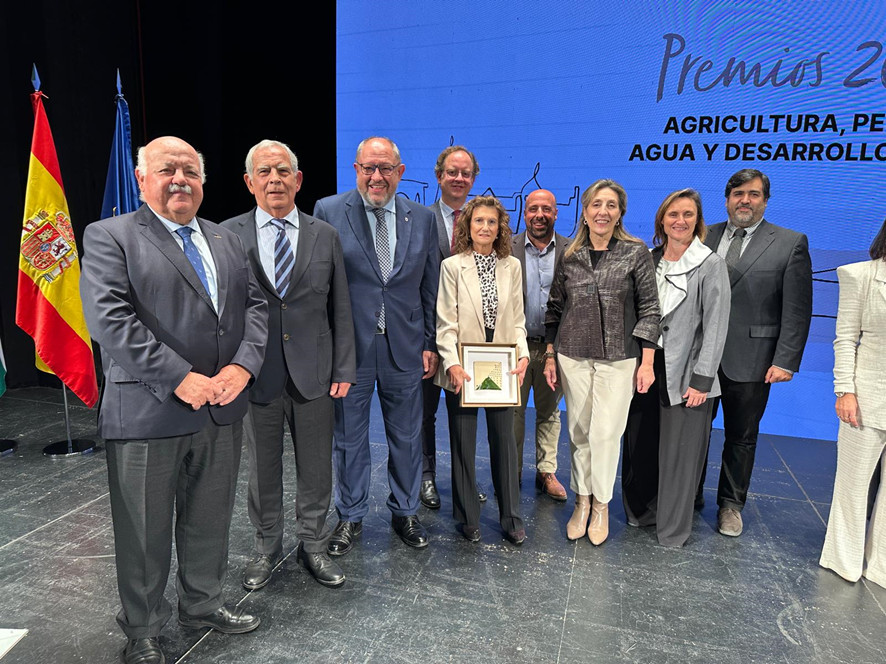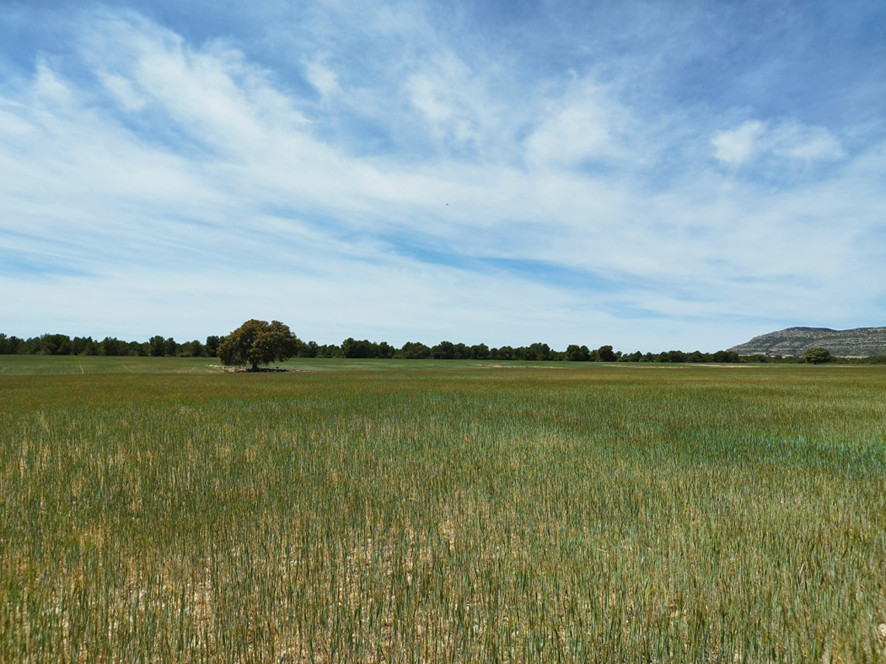LIFE Agromitiga project present at the COP 26 in Glasgow

Conservation Agriculture in the Eco-schemes of the new CAP
2021-10-30
Why Conservation Agriculture could be key to curbing climate change
2021-11-30LIFE Agromitiga project present at the COP 26 in Glasgow
On 8th November, as part of the side events organised by the European Union on the occasion of COP26, the LIFE Agromitiga project was presented during the seminar "Carbon farming in the 2030 Agenda for Soil and Climate Health" moderated by the European Conservation Agriculture Federation (ECAF).
The event, which lasted one hour and was streamed on the internet, attracted the interest of the attendees through a programme in which, in addition to the LIFE Agromitiga project, other initiatives related to the potential of agricultural practices to increase soil carbon sequestration, the opportunities that open up for the agricultural sector with the new carbon markets and the provision of tools and technologies for monitoring and verification of carbon sequestration on a large scale were presented.
Gottlieb Basch, president of ECAF and moderator of the event, gave the floor to Professor Claire Chenu, research director at the French Research Institute for Agriculture, Food and Environment (INRAE), associate professor at the AgroParisTech institute, member of the scientific-technical committee of the 4 per 1000 initiative and coordinator of the European EJP Soil project within the H2020 programme. In his presentation, Chenu explained how soils with a higher carbon content lead on the one hand to better crop yields and on the other hand to greater inter-annual stability in production. In addition, Chenu presented a battery of possible agronomic management methods to increase carbon in the soil, including direct seeding and cover crops, among others, and how, if implemented on French agricultural land, they could, over 30 years, sequester more than 8 million tonnes of carbon, which would offset 41% of France's greenhouse gas emissions from the agricultural sector. Throughout his presentation, Chenu referred to the need to assess the mitigation potential of agricultural practices considering emissions of other greenhouse gases such as N2O. To conclude the presentation, the results of a report were presented, which studied how, depending on the amount of economic incentives, the area of implementation of C-sequestering agricultural practices increased.
Gottlieb Basch then gave way to Emilio González, professor at the University of Cordoba and Secretary General of ECAF, who introduced the LIFE Agromitiga project to the audience. Gonzalez began his presentation by outlining some of the most serious environmental problems in Europe, such as soil degradation and carbon loss due to intensive tillage. In contrast to this practice, González presented Conservation Agriculture and how the application of its three principles leads to a series of environmental benefits including increased carbon sequestration in the soil. These practices are the basis of the LIFE Agromitiga project, established in a network of 36 farms in Andalusia both in herbaceous crops in direct sowing and in woody crops with vegetation covers. Sánchez then showed some of the results achieved in the project, highlighting how in the plots under Conservation Agriculture, CO2 emissions linked to energy consumption were reduced by 42%, which together with an increase in crop yields, multiplied by 10 times the efficiency of CO2 use in conservation management systems. Regarding carbon sequestration in the soil, the results show that plots under conservation agriculture increased the carbon content of the soil by 13% compared to plots under conventional management. Sánchez highlighted how this increase had been produced thanks to the plant remains generated by the previous crop on the same plot, without the need for exogenous inputs, which results in a greater climate neutrality of the system. Finally, González highlighted the potential of these practices in Europe, which can sequester the equivalent of almost 200 million tonnes of CO2 per year, and how public-private collaboration, within the framework of the sustainable development objectives, the European Green Pact or initiatives such as Agoro (Carbon Alliance), which identifies Conservation Agriculture as one of the activities that can generate carbon credits to operate in private markets.
After Emilio González's presentation, it was the turn of Adeline de Lamar, European project manager at South Pole, an organisation dedicated to developing and implementing projects to reduce greenhouse gas emissions. Adeline focused her presentation on voluntary carbon markets and how they can serve as a driver for the adoption of regenerative agricultural practices. In her presentation, de Lamar emphasised how government action is not enough to meet the objectives of the Paris Agreement, highlighting how the private sector can play an essential role in making it possible, together with the public sector, to meet the challenges of mitigating and adapting to climate change. In this sense, voluntary carbon markets are emerging as a tool that allows companies to offset their greenhouse gas emissions beyond their carbon footprint. De Lamar noted that these markets are currently experiencing a significant boom, not surprisingly, in 2020, 100 megatonnes of CO2 were offset through this tool. Even so, these figures are still insufficient to meet the objectives of the Paris Agreement, and it is necessary to multiply the offsetting figure by 15 and 100 to reach the reductions committed to in 2030 and 2050 respectively. De Lamar presented the typology of solutions that are currently enabling companies to offset their emissions in the carbon markets. Of these, 33% were based on ecosystem-based actions, and of these, only 2% were agriculture-based actions, and there is great potential for growth in this area. To increase agriculture-based actions, especially in Europe, de Lamar stressed that it is necessary to overcome some barriers, such as the difficulty in scalability of solutions on farms, due to their small size compared to other countries such as the US or Australia, or the lack of guarantee that the proposed solutions will be applied in a sustainable way over time.
The last presentation was given by Jean-François Soussana, vice-president of INRAE and coordinator of the CIRCASA project, and Eric Ceschia, an INRAE scientist working at the Centre for the Study of the Biosphere from Space (CESBIO). Soussana began his presentation by talking about the European Union's soil mission, the aim of which is to restore the health of the soil. Currently, it is estimated that 70% of European soils are degraded, with an associated cost of 50 billion euros. In relation to carbon, Soussana presented the data that the EU's Joint Research Centre manages in relation to the loss of this element in the soil, estimating this loss at 0.5% per year. In this sense, the SoilMission aims to increase the carbon content of agricultural land by between 0.1% and 0.4% per year. Soussana then presented the CIRCASA initiative (Coordination of International Cooperation on Soil Carbon Sequestration Research in Agriculture), which aims to develop international synergies in research and knowledge exchange in the field of carbon sequestration in agricultural soils at EU and global level, with the active participation of all stakeholders. Following Soussana's intervention, Eric Ceschia took the floor to talk about the creation of an operational framework for monitoring, reporting and verification of carbon sequestration. Ceschia spoke about how such a framework would be very useful for all stakeholders, but not without complexity in its design and implementation. Such a framework must be tailored to the interests of all stakeholders, in line with the carbon calculation standards given by science and applicable at various scales of work. In Ceschia's view, such a framework needs to integrate all types of data, from farmer-supplied data to remotely sensed data, not forgetting data from direct sampling. In this sense, there are already some prototypes in Europe, such as FiON in Finland and AgriCarbon-EO in France, of which he showed its design and operation.
The event was closed by Paul Luu, executive secretary of the international 4 by 1000 initiative, who highlighted the most interesting points of the event. Among them, he highlighted how carbon farming has great potential not only to combat climate change by increasing carbon sequestration, but also to increase biodiversity and guarantee food security. Luu emphasised how Conservation Agriculture is a very interesting tool that would also allow farmers to play a very active role in climate change mitigation. He also pointed out how voluntary carbon markets would allow such solutions to be adopted on a larger scale. Finally, Luu put science as the basis for the development of international cooperation initiatives for the monitoring and assessment of soil carbon content on a large scale, noting the need for frameworks that are harmonised and accepted by all stakeholders.




